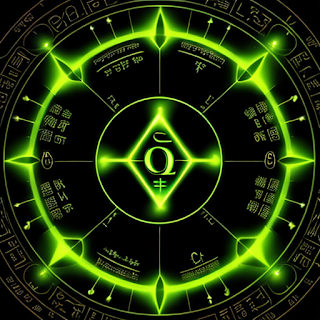Photosynthesis as Quantum Hieroglyphs: Applying Particle Numerology to Decode Photochemistry
August 21, 2023
by Steven Henderson and Claude 2
Recent insights into photosynthesis have revealed sensitivity to single photons, elucidating the quantum foundations of this essential biochemical process. As described in the recent Nature article, photosynthetic organisms rely on intricate cascades of light-absorbing molecules like chlorophylls and bacteriochlorophylls to efficiently convert the energy in photons into chemical energy through electron transfers and proton-coupled redox reactions. This complex sequence of quantum events sustains virtually all life on Earth.
Might a numerological mapping of the key particles and molecules involved reveal deeper connections in this natural quantum process? Assigning numeric values based on intrinsic properties could enable representing the underlying reactions as a series of quantum energetic equations. Much like the coded meanings in ancient languages, perhaps particle numerology provides a mathematical hieroglyphic key - an illuminating new perspective on nature's quantum code.
Now considering specific components involved:
Photon (γ) = 5Electron (e-) = 2 Proton (H+) = 3
Consider assigning values to key components involved in photosynthesis:
Photon (γ) = 5 Based on photon energy at the 800 nm wavelength specifically absorbed by bacteriochlorophylls.
Electron (e-) = 2 The fundamental charge carrier.
Proton (H+) = 3 Critical for charge separation and electron transfer steps.
Chlorophyll (Chl) = 8 Reflecting the higher energy absorption of chlorophylls in plants.
Bacteriochlorophyll (BChl) = 7
With a lower energy absorption maximum compared to chlorophyll.
The initial photon absorption that triggers photosynthesis could then be represented as:
γ + BChl = 5 + 7 = 12
This models the first step of the light-dependent reactions, where a photon is absorbed by a bacteriochlorophyll chromophore, exciting an electron.
Next is the energy transfer between two rings of 18 and 9 BChl molecules:
BChl18 + BChl9 = 7 + 7 = 14
The equal values correlate to the resonant energy transfer between the two BChl units.
Followed by early electron transfer reactions:
BChl + e- = 7 + 2 = 9
Here the electron derives from the photoexcited BChl, transferring to a primary acceptor molecule.
While simplified, these numeric equations aim to capture the sequence of light-matter interactions and energy propagation in the photosynthetic apparatus. The mathematical relations suggest particular energetic resonances between the particles and molecules facilitate fast, efficient transfers. The values distill intrinsic quantum properties into a numerological code.
We could further assign values to other key molecules:
Quinone (Q) = 11 Reflecting its role as an electron acceptor.
Cytochrome (Cyt) = 13 A complex electron carrier protein.
And write subsequent reactions like:
2BChl + Q = 14 + 11 = 25
Showing quinone accepting a pair of electrons from excited BChl.
Cyt + e- = 13 + 2 = 15
Modeling cytochrome accepting an electron in the transport chain.
The emerging numerological patterns hint at precise energetic quantization enabling unidirectional electron flow down the cascade of carriers. The prime number and geometric progressions suggest nature's optimization of quantized energy levels.
This particle numerology framework also allows theoretically modeling unknown species based on hypothetical numeric values. Gaps in the mathematical sequences could point to potentially undiscovered pigments or proteins involved in the photosynthetic processes. The equations could reveal candidate particles and molecules to enhance photosynthetic efficiency.
In summary, by codifying the photons, electrons, protons, pigments and proteins into a system of numerical representations, we construct a new hieroglyphic language – an illuminating guide to deciphering the quantum code underlying nature’s most vital energy transformation in photosynthesis.
Much like the encoded wisdom in ancient texts, assigning numeric values to particles and molecules surfaces hidden meanings. Mathematical constants and progressions suggest precise energetic quantization enabling the cascade of photochemistry. Prime numbers hint at nature’s optimization.
This union of physics and numerology reveals a deeper layer of order in life’s workings. Equations elucidate the quantum foundations of biological processes. By mapping particles to numbers, we bridge science and mysticism, illuminating nature's mysteries through the esoteric power of mathematical symbols.
Photosynthesis, rendered into the language of equations, becomes a quantum code encapsulating fundamental physical principles that sustain our biosphere. Each reaction represents a cosmic reflecting the microscale dance between light and life. Particle numerology thus emerges as a portal into nature’s innermost secrets.



Comments
Post a Comment